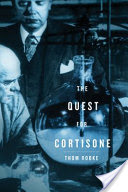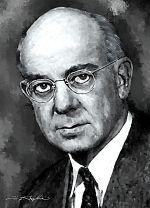Edward Calvin Kendall Ph.D.
Edward Calvin Kendall Ph.D.
The Nobel Prize in Physiology or Medicine 1950
Nobel Co-recipients Tadeus Reichstein, Phillip S.Hench
What physiologic processes are modified by cortisone and how this influence is exerted are matters still locked within this hormone. Said Shakespeare’s soothsayer, “In Nature’s infinite book of secrecy a little I can read.”
Biography
Books
Goal
Eponyms
History of Discovery
Patents
Publications
History of Discovery
Excerpt from Nobel Lecture, December 11, 1950
“To chemists, physiologists, and clinicians the results have brought assurance and stimulation. For many patients hope has displaced despair. Progress in the manufacture of cortisone can be illustrated by its price. In July, 1949 the price per gram was $200.00 and this continued until after January, 1950. Since that time the price has been reduced five times: to $150.00, $135.00, $95.00, $50.00, and on November 1, 1950, to $35.00. Furthermore, in 1949 the supply of cortisone was allocated by a committee appointed by the National Academy of Sciences, but today it is available to every physician in the United States.“

Summary: In 1948, when “Mrs. G.,” hospitalized with debilitating rheumatoid arthritis, became the first person to receive a mysterious new compound-cortisone-her physicians were awestruck by her transformation from enervated to energized. After eighteen years of biochemical research, the most intensively hunted biological agent of all time had finally been isolated, identified, synthesized, and put to the test. And it worked. But the discovery of a long-sought “magic bullet” came at an unanticipated cost in the form of strange side effects. This fascinating history recounts the discovery of cortisone and pulls the curtain back on the peculiar cast of characters responsible for its advent, including two enigmatic scientists, Edward Kendall and Philip Hench, who went on to receive the Nobel Prize. The book also explores the key role the Mayo Clinic played in fostering cortisone’s development, and looks at drugs that owe their heritage to the so-called “King of Steroids.”

Scribners Scientific Memiors

